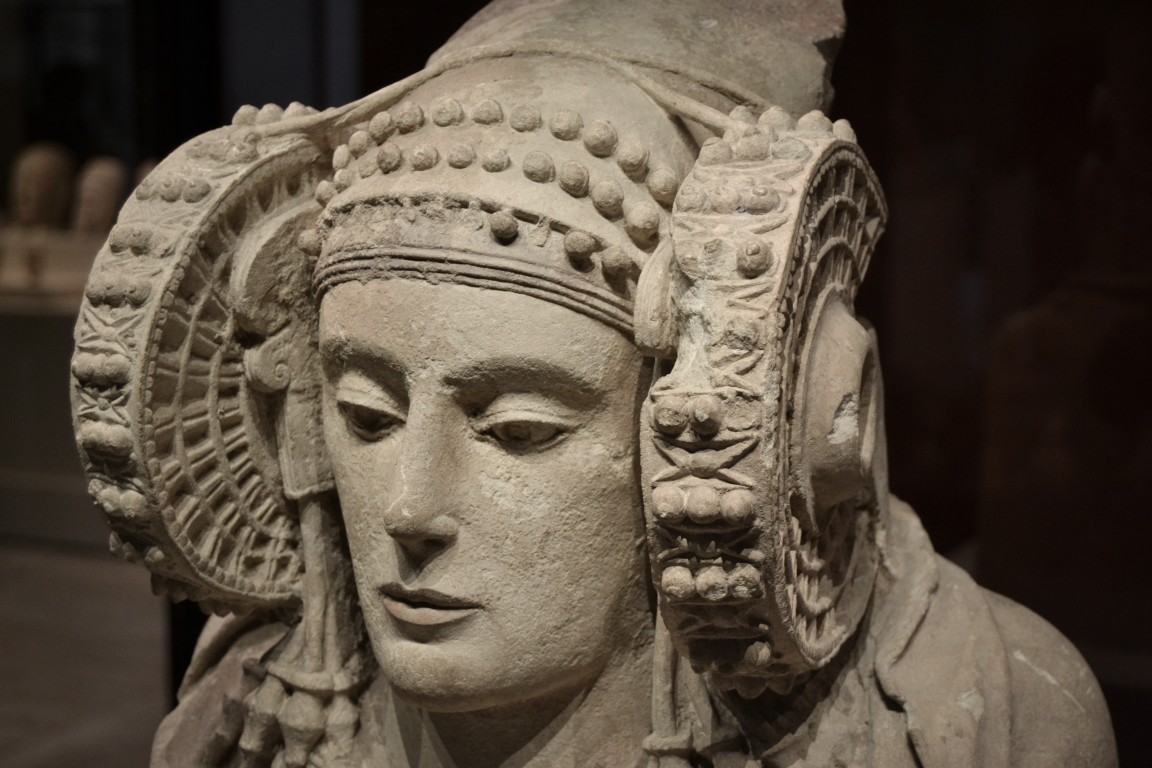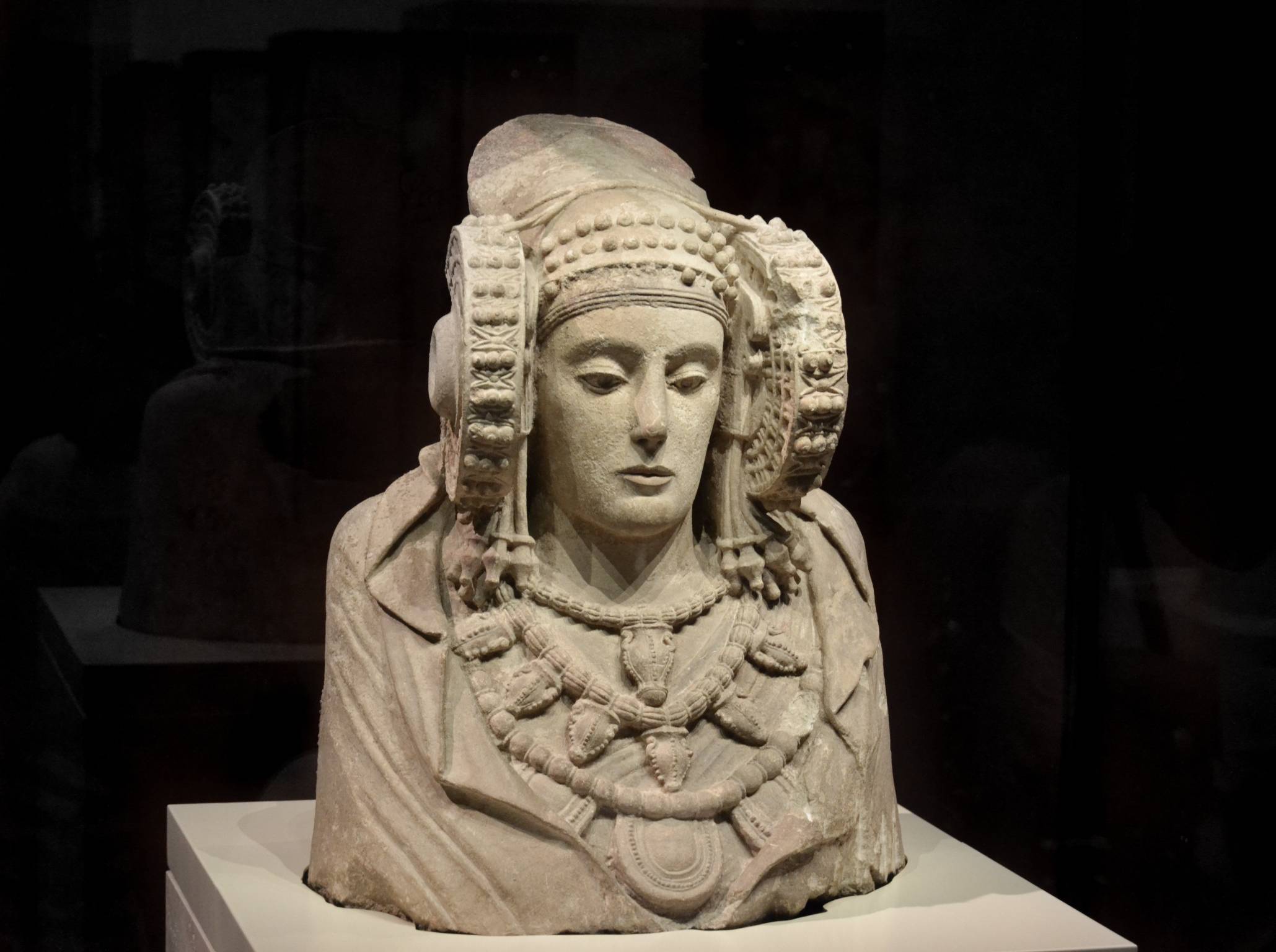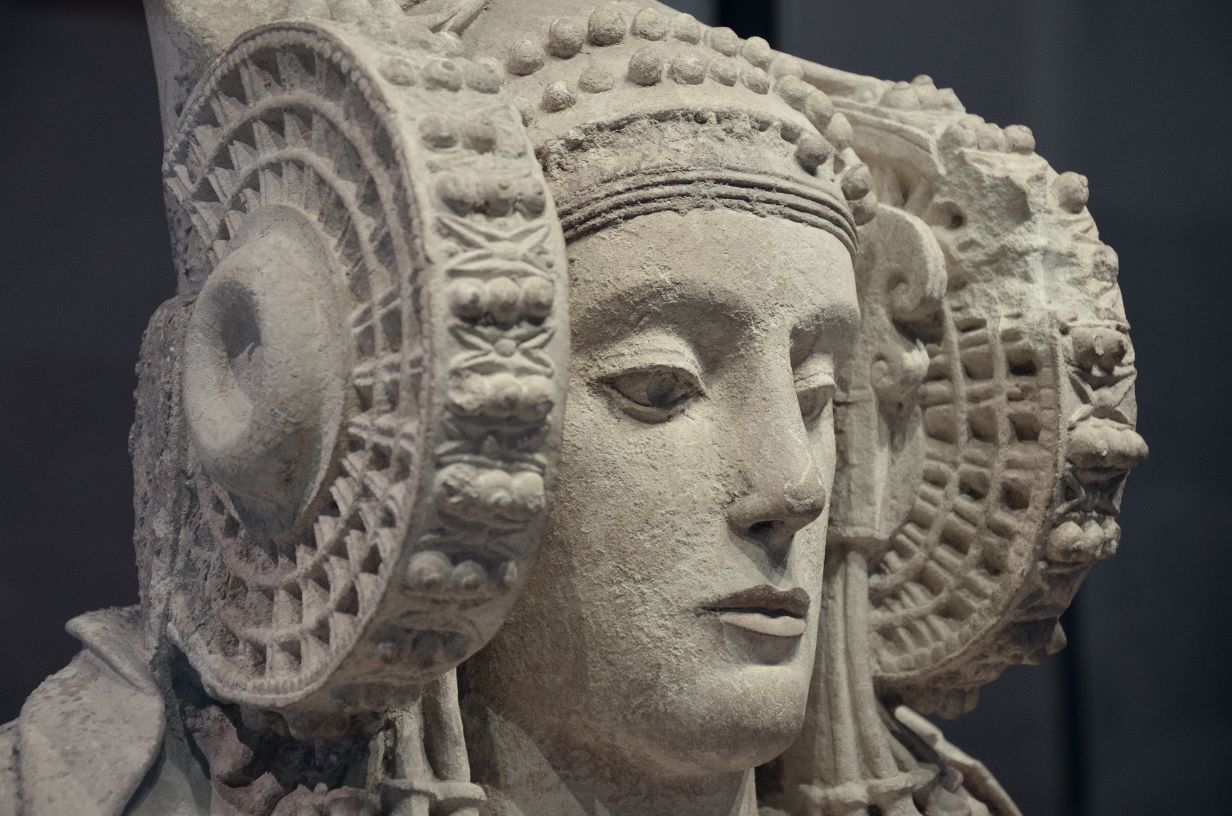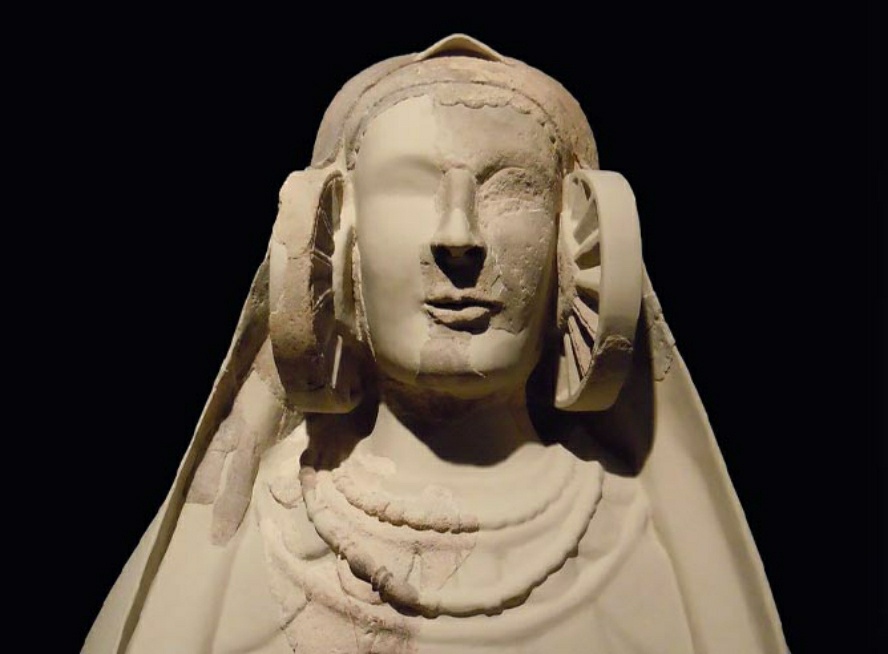The most enigmatic ancient sculptures is The Lady of Elche, with its strange helmet that could link it to a long-lost prehistoric
One of the most enigmatic ancient sculptures ever discovered is The Lady of Elche, with its strange helmet that could link it to a long-lost prehistoric civilization or visitors from other worlds.

The Lady of Elche

For some, it is nothing more than the sculpture of a powerful mighty queen or an ancient priestess, for others it is proof of the technological advances used in a civilization lost in time.
The mysterious artifact ― a polychrome bust representing a woman’s head, expertly carved out of 56 cm high, 45 cm wide and 37 cm deep porous limestone ― was unearthed in 1897 by a young rural worker who was cleaning an area for planting on the L’Alcúdia property in Elche, in southeastern Spain.
According to experts, the sculpture dates from the 4th century BC and its discovery confirms the existence of an ancient Iberian culture.
The conditions in which The Lady of Elche was found are impressive, compared to the other artifacts found in the same region. This bust seems to have been out of context, appearing to have been deliberately placed in the place to be protected or hidden, in such a way that it is virtually impossible to know what its true meaning and purpose is, as it is not related to the environment in which it was found.
The enigmatic helmet

The whole piece weighs about 65 kilos and represents a woman beautifully dressed in three pieces of clothing: a tunic, a dress and an open cape with lapels. When the bust was discovered, streaks of bright colors, such as red and blue, were also noticed, meaning that its former manufacturers probably painted it too.
But what stands out the most are the two large coils that frame each side of her face, similar to a bun, braided and decorated with lotus flower and pearl shapes, with earrings that hang down to the shoulders and a carved necklace that adorns her neck.
The origin of the bust is a subject of much debate
Some scholars argue that The Lady of Elche is Iberian and suggest that this is an image of a queen, since only a woman from the high aristocracy could use such a spectacular and majestic decoration, while other researchers believe she was a priestess or an ancient goddess linked to culture Basque.
Other scholars suggest that it was carved into the image of a Carthage goddess named Tanit, known to have powers over the moon, sun and stars.
Now, for some extraordinary thinkers, what the woman wears is nothing more than a helmet with advanced ancient technology and they proposed that The Lady of Elche would be the descendant of some colonists of Atlantis in that region of the iberian Peninsula. His technological helmet would reflect the highly advanced nature of this civilization.
Currently, the original artifact is in Madrid, and a replica of it was produced and housed at the Museum of Archeology and History of Elche.
There are some more mind blowing discoveries which resemble The Lady of Elche. In 1987, The Lady of Guardamar was discovered at the Phoenician archaeological site Cabezo Lucero in the Spanish province of Alicante, near Elche.

The Phoenician civilization has its origins in the eastern Mediterranean, and was concentrated along Lebanon and Syria and, at its peak, between 1,100 and 200 BC, civilization spread across the coast of the Mediterranean Sea to the Iberian Peninsula.
Another discovery, even more intriguing, were the 12 medallions with the same figure and containing cuneiform inscriptions found in 1969 in Richfield, Utah, in the United States, buried more than two meters deep, which are a complete mystery and, until today, no one has been able to explain its origin.

It is known that the Phoenicians were experienced navigators and intrepid explorers, developing an extensive network of maritime trade that lasted more than a millennium, becoming the dominant power for much of antiquity.
There are many theories about the presence of the Phoenicians in America, including in Brazil, which are supported by records, inscriptions and discovered artifacts, which would indicate that this civilization was much more advanced than is supposed and would have crossed the Atlantic Ocean at least 2,000 years ago before Columbus, and could have connections or perhaps even be the descendants of the lost civilization of Atlantis.
Related Post
A shocking documentary proves that mermaids do exist
SHOCKING Revelation: Thuya, Mother of Queen Tiye, Was the Grandmother of Akhenaten and Tutankhamun—What Ancient Egyptian Secrets Did She Leave Behind?
Breaking News: Astonishing Discoveries at Karahan Tepe Confirm an Extraterrestrial Civilization is Hiding on Earth, and NO ONE Knows!
Breaking News: Researchers FINALLY Discover U.S. Navy Flight 19 After 75 Years Lost in the Bermuda Triangle!
NASA’s Secret Investigation: Uncovering the Astonishing Mystery of the UFO Crash on the Mountain!
Explosive UFO Docs LEAKED: Startling Proof That Aliens Ruled Ancient Egypt!